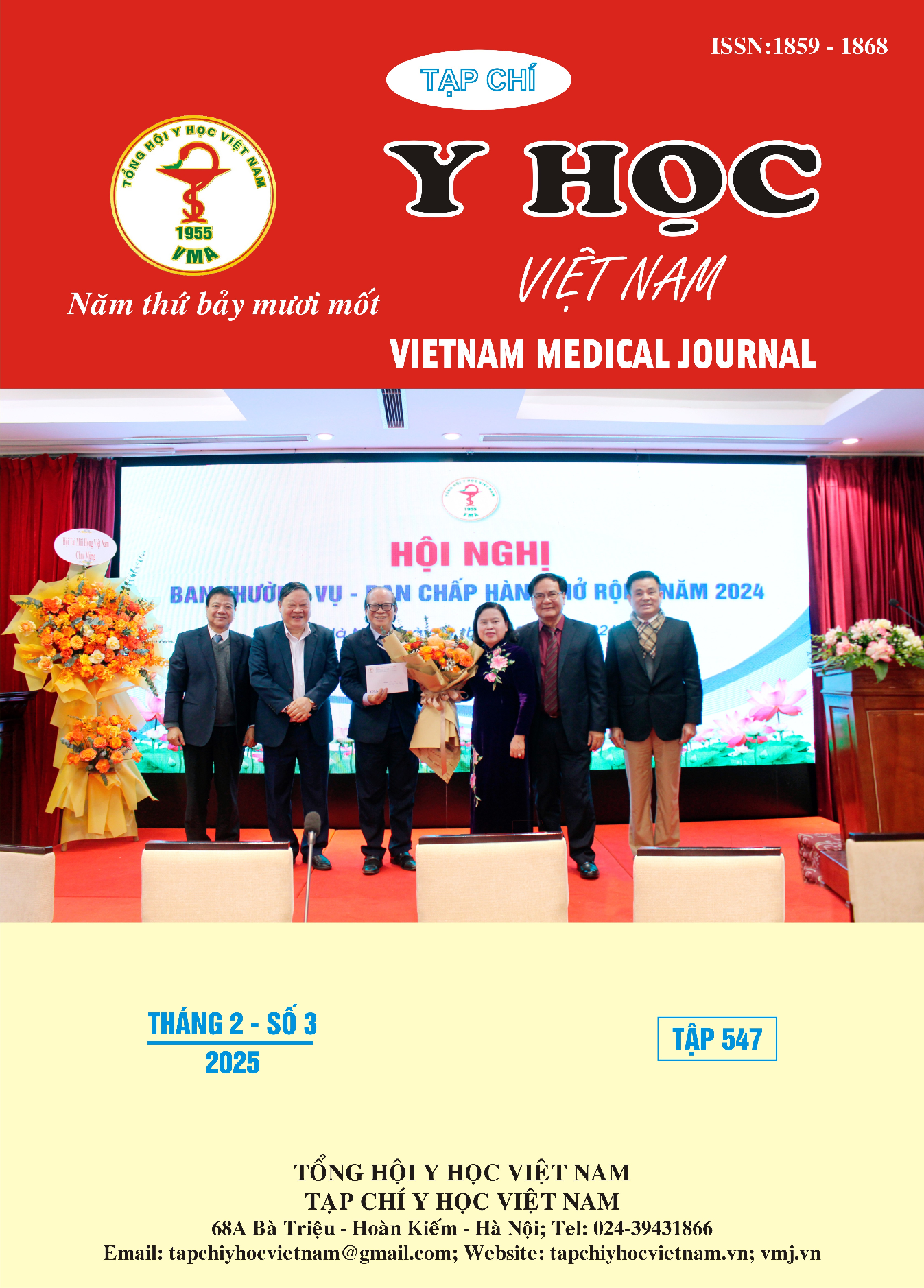LONG-TERM RESULTS OF BYPASS SURGERY FOR AORTOILIAC OCCLUSIVE DISEASE AT CHO RAY HOSPITAL
Main Article Content
Abstract
Background: Simple surgical procedures include endarterectomy and axillo-femoral bypass. However, the risk of bypass occlusion is significant. In response to this concern, aorto-iliac bypass surgery has been developed, and numerous studies have explored its effectiveness. Brewster DC and colleagues first demonstrated its efficacy in 1997. Following this, various researchers have conducted studies to assess the outcomes of aorto-iliac bypass surgery, and their findings have generally been very positive. Endovascular intervention has also become an important option for treating aorto-iliac artery occlusion, as it is less invasive and more convenient for high-risk patients and those with comorbidities. Nonetheless, many studies indicate that there are no significant differences in long-term outcomes, specifically regarding the primary patency rate, between surgical bypass and endovascular intervention for aorto-iliac artery occlusion. In light of this, we conducted our study to evaluate the long-term results of aorto-iliac bypass surgery in treating aortic stenosis. Methods: Retrospective description of case series. Results: The study included participants with an average age of 56.3 years (± 19.3), predominantly male. Diabetes and smoking were prevalent, affecting 90.2% and 68.8% of the participants, respectively. Infrarenal abdominal aortic occlusion was the leading condition, present in 86.8% of the study sample. Within this group, infrarenal abdominal aortic occlusion accompanied by bilateral iliac artery occlusion accounted for 96.1%. The majority of surgeries, 96.1% of the cases, utilized a midline abdominal approach. The study recorded two types of prostheses: Y-shaped prostheses, making up 96.1%, and straight-tube prostheses at 3.9%. Most patients (67.3%) underwent internal iliac artery revascularization. The average aortic-iliac clamping time was 53.7 minutes, while the average surgical time was 217 minutes. The technical success rate was high at 96.6%, with a 30-day mortality rate of 4.1%. During the follow-up period, the 10-year survival rate was reported to be 87.8% of the study participants. Conclusion: Surgery to treat juxtarenal iliac and infrarenal aortic occlusion typically has a high success rate and few complications. Long-term follow-up shows that primary patency and survival rates remain high. As a result, the bypass surgery method provides long-lasting effectiveness and safety for patients.
Article Details
Keywords
Juxtarenal and Infrarenal abdominal aortic occlusion, Aorto-iliac and aorto-femoral bypass surgery
References
2. Sharma G, Scully RE, Shah SK, et al. Thirty-year trends in aortofemoral bypass for aortoiliac occlusive disease. J Vasc Surg 2018;68(6):1796 1804.doi:10.1016/j.jvs.2018.01.067.
3. Lau H, Cheng SW. Long-term outcome of aortofemoral bypass for aortoiliac occlusive disease. Ann Acad Med Singapore. 2000; 29(4):434-438.
4. Society for Vascular Surgery Lower Extremity Guidelines Writing G, Conte MS, Pomposelli FB, et al. Society for Vascular Surgery practice guidelines for atherosclerotic occlusive disease of the lower extremities: management of asymptomatic disease and claudication. J Vasc Surg 2015;61(3 suppl l): 2S-41S. doi:10.1016/j.jvs.2014.12.009.
5. Rocha-Neves J, Ferreira A, Sousa J, et al. Endovascular Approach Versus Aortobifemoral Bypass Grafting: Outcomes in Extensive Aortoiliac Occlusive Disease. Vasc Endovasc Surg 2020;54(2):102-110. doi:10.1177/1538574419888815.
6. Lee GC, Yang SS, Park KM, Park Y, Kim YW, Park KB, Park HS, Do YS, Kim DI. Ten year outcomes after bypass surgery in aortoiliac occlusive disease. J Korean Surg Soc. 2012 Jun;82(6):365-9. doi: 10.4174/jkss.2012.82.6.365.
7. Bredahl K, Jensen LP, Schroeder TV, Sillesen H, Nielsen H, Eiberg JP. Mortality and complications after aortic bifurcated bypass procedures for chronic aortoiliac occlusive disease. J Vasc Surg. 2015 Jul;62(1):75-82. doi: 10.1016/j.jvs.2015.02.025.
8. Wang C, Chen J, Shao J, Wang J, Qiu C, Lai Z, Li K, Xu L, Yu X, Zhu Z, Wang J, Liu X, Yuan J, Liu B. Ten-year experiences and outcomes of bypass surgery and endovascular therapy in the management of infrarenal aortic occlusion: a single-center retrospective cohort study. Quant Imaging Med Surg. 2023 Dec 1;13(12):7854-7865. doi: 10.21037/qims-23-236.
9. Passman MA, Taylor LM, Moneta GL, Edwards JM, Yeager RA, McConnell DB, Porter JM. Comparison of axillofemoral and aortofemoral bypass for aortoiliac occlusive disease. J Vasc Surg. 1996 Feb;23(2):263-9; discussion 269-71. doi: 10.1016/s0741-5214(96)70270-7.


